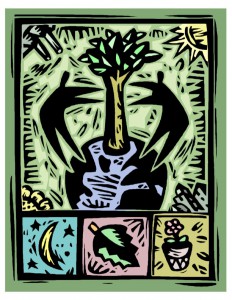 Fundraisers have the power to move their organization’s philanthropic culture past their front door, yet often they do not. “When we talk about an institutional culture of philanthropy, we tend to inadvertently create a bubble around the culture,” says Vivian Ann Smith, CFRE, president of Liberty Quest Enterprises Inc. (www.libertyquest.ca) in British Columbia. “For the culture to sustain itself and grow, it needs to belong to the community, however you define that.”
Fundraisers have the power to move their organization’s philanthropic culture past their front door, yet often they do not. “When we talk about an institutional culture of philanthropy, we tend to inadvertently create a bubble around the culture,” says Vivian Ann Smith, CFRE, president of Liberty Quest Enterprises Inc. (www.libertyquest.ca) in British Columbia. “For the culture to sustain itself and grow, it needs to belong to the community, however you define that.”
Smith says that development officers are a natural resource for teaching and serving as role models for the impact of philanthropy in everyone’s lives. Through such efforts, the rising tide of philanthropic spirit will lift all nonprofit boats in the community. “If we can share our philosophy of philanthropy, a person may give, yet not to my organization,” says Smith. “But if they are moved to make a gift elsewhere, then my entire community benefits.”
Smith encourages fundraisers to pass this philosophy along to board members as part of their training and also to incorporate it into the organization’s succession planning. Fundraisers can also model this activity in their community by donating their time and money to local charities and by encouraging others in their organization to do so as well.
Another way to spread the culture of philanthropy, Smith suggests, is to offer to speak to local civic groups about the benefits of giving to the community. “My hope is that, as we consistently take that message to others, we will reach a tipping point where people start carrying it out in their own lives,” she says.
Another reason to spread a culture of philanthropy into the larger community is to help cultivate the next generation of donors — a particularly important consideration over the next few decades as the baby boomer generation begins to shrink. Teaching children about philanthropy, by instruction and by example, is a key element of any strategy for ensuring a healthy and sustainable philanthropic community over the long term. Robert J. Mueller, CFRE, senior director of mission and stewardship at Hosparus (www.hosparus.org) an eldercare hospice in Louisville, Kentucky, says that philanthropic habits instilled early can last a lifetime. “When I was a kid, in church I was responsible for holding the church envelope and putting it in the basket,” recalls Mueller. “It taught me something. I learned how to give.”
The study Women Give 2013 found that when parents talk to their children about philanthropic behavior and serve as role models in charitable giving, their children will be more likely to support charities later in life. Mueller encourages fundraisers to seek out opportunities for parents and children alike to engage with charities, including participation in AFP-sponsored Youth in Philanthropy and National Philanthropy Day® activities (www.afpnet.org/about). Mueller also encourages fundraisers to approach elementary schools, high schools, and colleges with proposals for events and presentations that focus on philanthropy and provide children with valuable hands-on experiences working in hospitals, eldercare facilities, arts and cultural organizations, and elsewhere.
Community engagement efforts that focus primarily on events, however, miss the opportunity for long-term engagement, Mueller cautions. “People end up with the misperception that bake sales and fun runs are the way to go,” he says. “I see it in many organizations, including my own sometimes — they focus on events and miss the tripod of repeat, major, and planned gifts. And that takes them away from the greater things of philanthropy.”
Sustained community engagement also helps dispel the stereotype people have of nonprofits as always having their hand out. Mueller relates how, when he makes thank-you calls to donors, he can sense them cringe when he introduces himself and his organization. They instinctively expect that he is calling to solicit more money. Instead, when he tells them that he is calling to thank them for their past support, they are surprised and grateful. At the same time, donors’ reactions to being thanked make fundraisers feel better about what they do. “I can get more mileage out of thanking donors than asking them,” says Mueller. “It’s not just numbers, it’s about getting people to feel good about giving,” Mueller says. “It’s a matter of walking your talk.”
Karen Osborne, president of The Osborne Group Inc. (www.theosbornegroup.com) in Mt. Kisco, New York, agrees. “When all of our internal and external stakeholders understand what a culture of philanthropy is, when they believe in it, embrace it, and act on it, it’s game-changing,” she says. Osborne recalls a conference at which five major-gift donors were invited to speak with a group of new fundraisers. Each of the five donors had been diligently cultivated for years by an organization with a strong culture of philanthropy. The organization patiently engaged each of them in personally meaningful and productive ways, sharing stories and inviting them to participate in activities that exposed them to every level of the organization and allowed them to develop relationships with the leadership, staff, and other board volunteers. Yet, when one of the fundraisers in the audience asked the donors to describe the best solicitation they had ever received, each one of them said, in all sincerity, that they had never once been solicited.
“That is our best work,” says Osborne with pride. “That, right there, is our job. Of course, they were solicited, but it didn’t feel that way.”
This post was adapted from “See the Light: How a Culture of Philanthropy in Your Organization Can Make a Difference in Morale, Board Motivation, and Donor Retention,” by Paul Lagasse, Advancing Philanthropy, Winter 2015 (reprinted with permission) You can read the whole article here.







